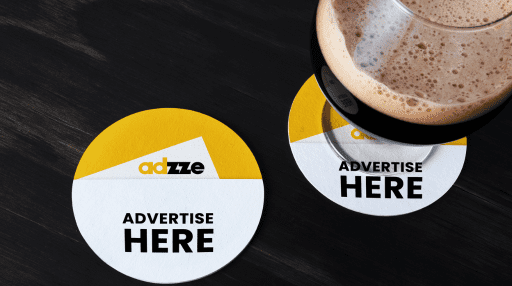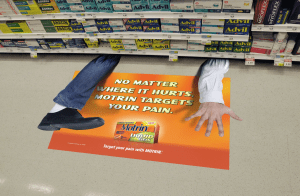Prescription Coasters Are More Than Just Branded Drink Mats
In today’s hyper-saturated marketing landscape, breaking through consumer resistance requires more than just flashy visuals or repetitive messages. For marketing professionals, the challenge is crafting campaigns that resonate on a deeper level—psychologically, emotionally, and contextually.
Enter prescription coasters, a highly overlooked yet powerful form of ambient advertising. These are branded coasters distributed in healthcare-related environments like pharmacies, clinics, and waiting areas—or even in hospitality venues with medical tie-ins. Often referred to as prescription beer coasters when placed in bars or cafes near hospitals or campuses, these touchpoints have surprising influence over consumer perceptions.
This blog explores the psychological mechanics behind prescription coasters and how this tactile medium subtly shapes behavior and brand recall—making them a uniquely potent tool in your advertising arsenal.
Prescription Coasters and the Power of Contextual Placement
Traditional advertising often competes for attention in chaotic environments. But prescription coasters work differently—they quietly slip into people’s daily rituals. Whether placed in pharmacies, coffee shops, or clinics, these coasters are encountered during moments of pause: waiting for a prescription, sipping a drink, or chatting with a friend.
Why is this important?
In these relaxed and receptive states, consumers are more likely to process messaging without resistance. This is a textbook example of contextual advertising—a strategy known to increase cognitive ease and emotional openness. Prescription coasters capitalize on this low-pressure setting, allowing messages to be absorbed with minimal resistance.
The Tactile Advantage: Why Holding a Message Matters
While digital ads flash and disappear, prescription coasters are physically handled. This tactile interaction makes a huge difference in how consumers remember and relate to a brand. Research in sensory marketing shows that holding a branded object—even for a few seconds—can create subconscious associations of ownership and trust.
Prescription beer coasters, in particular, benefit from extended interaction. Think about how often people fidget with coasters during a conversation or use them to rest their drinks throughout a meal. That’s multiple brand impressions over several minutes, happening naturally and repetitively.
This physical touchpoint transforms passive viewing into active engagement, which:
Enhances message retention
Creates a more favorable brand perception
Stimulates emotional resonance
Prescription Coasters and the Principle of Environmental Priming
One of the most powerful psychological mechanisms at play with prescription coasters is environmental priming. This principle refers to how the surroundings influence subconscious thought processes.
In pharmacies or clinics, for example, a branded coaster promoting wellness supplements or legal services for accident victims benefits from immediate relevance. The consumer is already in a health-focused state of mind, and the coaster’s message taps into that mental priming.
In the case of prescription beer coasters at nearby bars or cafés, consumers may subconsciously connect the brand to stress relief, relaxation, or post-treatment routines—all of which strengthen emotional attachment.
This subtle alignment with mood and mindset amplifies campaign effectiveness.
Subliminal Familiarity: When Repetition Meets Relaxation
Prescription coasters also exploit a core principle in advertising psychology: the mere exposure effect. This is the idea that people tend to develop a preference for things simply because they are familiar.
Now imagine someone visiting a pharmacy weekly. They encounter your coaster every time—on the counter, at the waiting bench, maybe even at a local coffee shop down the street.
Each exposure builds familiarity. Over time, that familiarity becomes trust.
For marketing professionals, prescription coasters offer a rare balance: frequency without fatigue. Because they’re not perceived as intrusive, repeated exposure doesn’t trigger the same resistance as digital retargeting or pop-ups.
Case Example: Prescription Coasters in Mental Health Campaigns
Let’s say you’re running a campaign to promote mental health services in urban areas. Digital ads may get scrolled past or blocked. But prescription coasters placed in pharmacies or therapy waiting rooms can carry messages like:
“You’re not alone.”“Your mind matters. Let’s talk.”“Scan to speak with a therapist now.”By blending supportive messaging with QR codes linking to services, these coasters become micro-interventions. Their effectiveness isn’t just in visibility—it’s in how they lower psychological barriers to seeking help.
Prescription Beer Coasters: The Unexpected Engagement Driver
Bars, lounges, and cafés aren’t typically linked to healthcare, but prescription beer coasters challenge that assumption. In fact, targeting post-treatment or recovery-phase consumers in social spaces can be incredibly strategic.
Consider these potential campaign themes:
Post-surgery rehabilitation programs
Legal assistance after medical injury
Pharma brand reminders for chronic treatments
Prescription beer coasters placed in establishments near hospitals or clinics extend your campaign reach without feeling out of place. They align with the consumer’s lifestyle while remaining topically relevant.
Design Matters: Make It Memorable, Not Medical
To maximize psychological impact, your prescription coasters should avoid looking like medical brochures. Instead, opt for clean, emotionally resonant design. Consider these creative tips:
Use calming color schemes (blues, greens)Include real faces (trust-building)Offer direct, friendly CTAs like “Scan for help” or “Try for free”Integrate subtle but purposeful brandingAvoid overwhelming text or sterile visuals. Remember, the environment is relaxed—your branding should match that energy.
Measuring Impact: Yes, You Can Track Prescription Coaster ROI
While prescription coasters may seem like an offline tactic, their effectiveness can be tracked with:
Unique QR codes tied to specific locationsShort vanity URLs directing users to landing pagesPromo codes only shared via coastersPhone numbers with call tracking softwareWith these tools, you’ll gain clear visibility into how this tactile campaign supports broader digital efforts—whether it’s driving traffic, lead generation, or appointment bookings.
Final Thoughts: Prescription Coasters Belong in Modern Media Mixes
In a world dominated by digital noise, prescription coasters offer a refreshing—and surprisingly effective—alternative. Their impact lies in their simplicity: they connect with consumers in moments of pause, when receptivity is high and defenses are low.
Whether in pharmacies, wellness clinics, or nearby cafés, prescription beer coasters create meaningful, repeatable interactions that build familiarity and trust. For marketing professionals, they represent an underutilized touchpoint with high psychological return on investment.
So the next time you’re planning a healthcare campaign or targeting patients with lifestyle-sensitive messaging, don’t overlook this humble yet powerful format.






